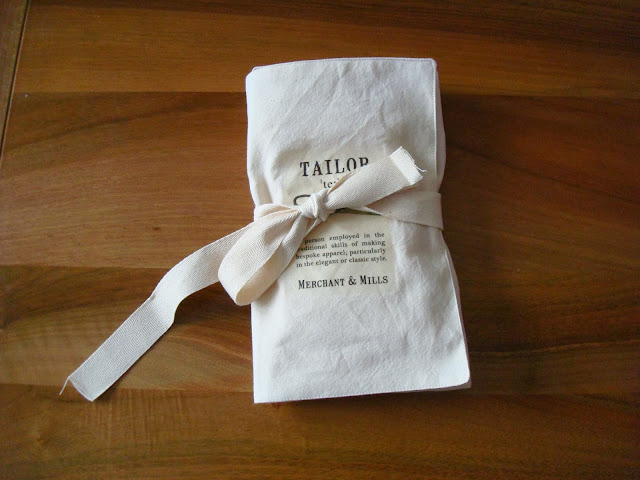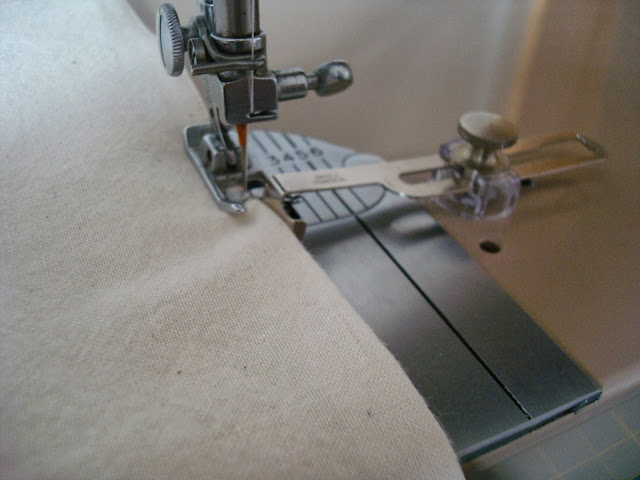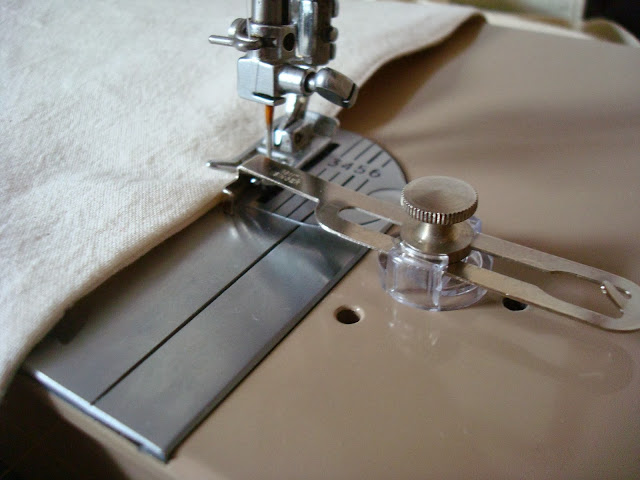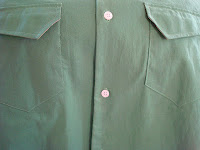This is one of those sewing projects that stalled and would not restart for some time. It was nearly finished for ages but now it is really finished.
If I had a dress form I could have shown this off a little better but the coat hanger give some idea. The pinny crosses over at the front and ties with a slim bow at the back.
The two ties are secured at the waist with a rectangle of topstitching on the inside of the pinny.
The tie on the left front passes through a small gap in the side seam under the armhole on the righthand side of the pinny. I reinforced this with some back and forward stitches rather than a worked buttonhole. This is a utility garment after all.
The stalling point for me was the bias binding. There must be about five yard of the stuff on this garment. I made my own and first tried to attach it with the vintage binding foot on the Singer 99K. The straights went well but it struggles with sharper curves and crossing seams. I had to unpick the dodgy bits and go back over them with the regulars straight stitch foot.
I didn't even attempt it on the armholes. I went out and bought a bias binder maker which is loads of fun to use and attached the binding by pinning and sewing once through all five layers. Not the finest of finishes but fine for doing the dishes in.
Not that I will be wearing it for washing the dishes or scrubbing the front step. It's far too small. It has however provided me with practice using bias binding and probably the confidence to have a go at making a dressing gown sometime soon.























































